
Focus


Embrace Foundation is a non-profit, educational foundation set up to create better understanding between people of different religions, cultures, traditions and world philosophies.
Embrace Foundation works to bring leaders and scholars of world-wide religions, cultures and philosophies together by sponsoring forums, seminars, lectures and developing an international exchange program. Embrace Foundation is particularly concerned with reaching the world public through the media.
Embrace Foundation works to bring leaders and scholars of world-wide religions, cultures and philosophies together by sponsoring forums, seminars, lectures and developing an international exchange program. Embrace Foundation is particularly concerned with reaching the world public through the media.
Purpose
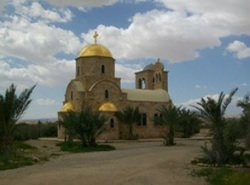
Donations
Embrace Foundation is an all volunteer organization. All donations go directly to programs.
Embrace Foundation does not and has never given permission to any outside organization to solicit or receive contributions on our behalf.
All donations should be made to Embrace Foundation only via Paypal or by mail. All donations are tax deductible. A receipt will be emailed to you. Please click on the Pay Pal link below to Donate.
Embrace Foundation does not and has never given permission to any outside organization to solicit or receive contributions on our behalf.
All donations should be made to Embrace Foundation only via Paypal or by mail. All donations are tax deductible. A receipt will be emailed to you. Please click on the Pay Pal link below to Donate.
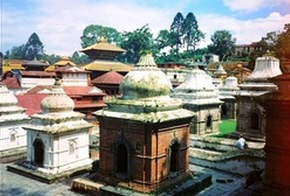
Travel As An Interfaith Act
Embrace encourages all who can do so, to learn about other traditions and cultures by traveling as “Grassroots Diplomats.” We hope that people every where become life long students of our world-wide humanity.
“ In every man there is something wherein I may learn of him, and in that I am his pupil.”
R.W.Emerson
“ In every man there is something wherein I may learn of him, and in that I am his pupil.”
R.W.Emerson
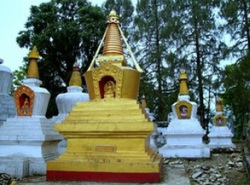

Embrace Humanity

Thank you for making a donation.
Important: See: “The Deconstruction of America (& the Possible Reconstruction) in FOCUS NEW ! TRAVELING IN AFRICA - 2020 - under CELEBRATE HUMANITY
Great Visions - TV
Guests are: Swami Satchidananda &
the Rt. Reverend Dean Parks Morton
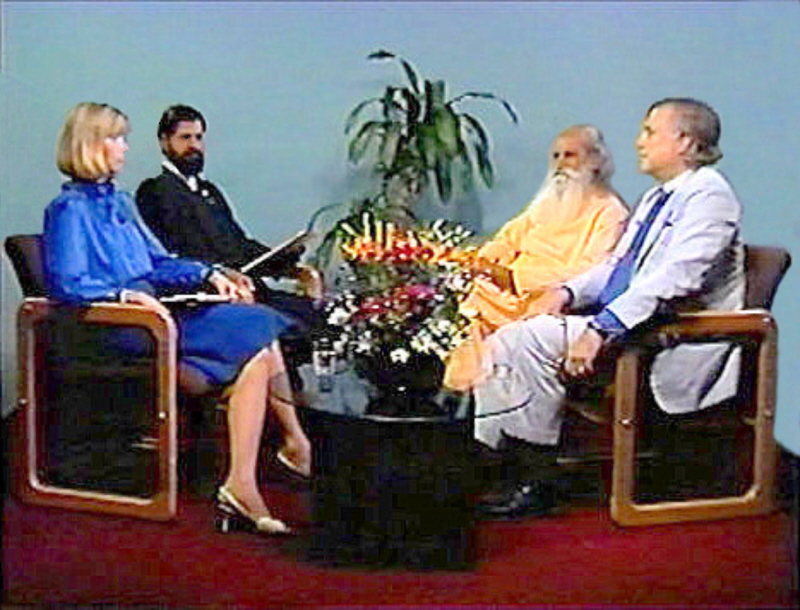
Embrace Archives
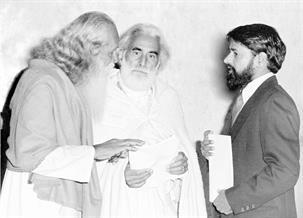
Limited Editions Gallery
Umrah - Jordan
Embrace Sacred Places
Monastery of Bahira - Syria
Embrace Foundation Universal
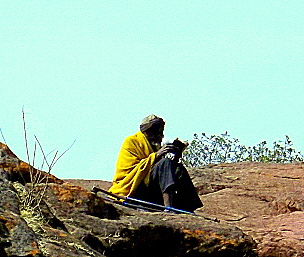
Monk Reading - Ethiopia
Embrace Foundation
- Great Visions TV
- Inspirations
- Media
- Possibilities
- Astrophysics, Quantum Physics & The Nature of Reality
- Deconstructing Nuclear Fission & Nuclear Waste
- Defense Industry as Community Builders
- Defense Industry As Energy Providers
- Global Water Shortages
- Innovative Technology
- Intelligent Communities & Development
- Pentagon & Non-Western Nations
- Recreating
- Resource Based Population
- Sharing Community Resources
- Protecting Human Rights
- Spiritual Ecology
- Syria
- Write to Us
ABOUT EMBRACE & SOME OF ITS’ REMARKABLE FOUNDING RABBIS, REBS
For 35 years Embrace has worked with open-hearted, open-minded Rabbis and Rebs and looks forward to doing so for many years to come.
Founding Rabbis, like the close personal friend of the Embrace Founders, Rabbi Gelberman, were raised in the Hasidic tradition and were even Hasidic Rabbis in Europe, before deciding to become what might be termed “interfaith - spiritual.” This change came partially because of their desire to share mystical Jewish teachings with interested gentiles and their determination to reach out to people who were not Jewish to create better understanding between communities.
Rabbi Gelberman however, is one who despite losing his wife and children in the holocaust, decided to “Embrace” love and goodness and to look forward with hope to a new kind of world with the enthusiasm of the Besht. He was almost always cheerful. Of the Jewish Rabbis and Rebs doing intensive interfaith work in the 1960’s and 1970’s Rabbi Gelberman and Rabbi Carlbach were among the first and foremost. They both, especially Rabbi Gelberman contributed greatly to Embrace. It should also be noted that these Rabbis were recommended to us early on by members in the Sufi community who had already been doing interfaith programs with them before Embrace was founded in 1982.
(A Note: Of all the early Religious, Spiritual leaders and Scholars working with Embrace, four were deeply involved with interfaith work in the United States long before we were founded and all of them were a strong foundation for our organization to build upon. - They were: Pir Vilayat Inayat Khan (Sufi), Swami Satchidananda (Yoga, Hindu), Rabbi Joseph Gelberman (Judaism & the Interfaith Seminary) and Rabbi Carlbach.) Also, these men were doing a lot of their work on the East Coast of the United States, so they were easy to call upon and meet with. They all knew each other for years and had collaborated with each other before Embrace was founded.)
It should also be noted that for many years Embrace had offices in two buildings in Manhattan, New York where a large number of tenants were Torah Jews, (members of the Jewish Hasidic & Litvak communities.) We grew to greatly respect and admire their unremitting adherence to “Truth” and to their devotion to the Divine despite much unkind discrimination. The Litvak community regularly demonstrates on behalf of Palestinian Human Rights in front of the United Nations and other locations. All Hasidim and Litvak are peace oriented and try hard to adhere to the 10 Commandments, which the Government in the Holy Land perpetually violates especially commandments 6, 8,9 & 10 without compunction.
To Learn More About Spiritual Judaism and Hasidic/ Litvak Judaism:
See: Ushpizin (The Guests) DVD – A Touching Story about Faith and Trying to Do the Right Thing – All people can relate to it
Kabbalah -The Way of The Mystic, by Perle Epstein – Inspiring (Good for Beginner with Basics)
Sacred Treasure – The Cairo Genziah – By Rabbi Mark Glickman – The Embrace Founders visited the Ben Ezra Synagogue where the Genziah is upstairs. As Rabbi Glickman muses, this is a long period when Jews and Muslims were just normal neighbors and friends. Kept documents in the Genziah give reference to these years. (Fine for Introduction)
The Tales of the Hasidim – Later Masters – Martin Buber – (Excellent for Introduction)
Zohar (Their are other translations) -Daniel Matt (Skylight Illuminations, Series Editor Andrew Harvey)
The Essential Kabbalah – (Also other Translations) Daniel C. Matt – Intro. - Huston Smith
Major Trends in Jewish Mysticism – Gershom G. Scholem - (Scholarly)
Tree of Life – Zev Ben Shimon Halevi
Judaism – Edited by Arthur Hertzberg – George Braziller Publishers, (The Braziller family were neighbors of the Embrace Founders for many years) (Excellent Book for Everyone) part of a series of volumes on Buddhism, Christianity (Protestant & Catholic volumes), Hinduism, Islam & Judaism
These are just a very few we’ve pulled from our shelves.
The Demographic and Ecological Situation in the Holy Land
Embrace has researched some information and percentages regarding the population in the Holy Land. For those not familiar with the history of the Holy Land since WW II, we would like to explain that there are Palestinians that agreed to become citizens of the government now controlling the Holy Land, (hoping not to lose family homes, property and businesses - never-the-less, many lost their homes, lands and businesses anyway.) Other Palestinians refused to become citizens and lost all of their property, family heirlooms and businesses. These Palestinians live in the West Bank and Gaza.
Dual Citizenship
One of the reasons for the discrepancy in population accounts of the Jewish population in the Holy Land is that a vast number of Jewish people with citizenship in the Holy Land actually have dual citizenship in the United States, Britain, the British Commonwealth Nations and Europe. Some *Russian Jews also have dual citizenship although dual citizenship seems to be phasing out. A very substantial number of these dual-citizens live outside of the Holy Land.
Our estimates from information gathered is that Palestinians living as citizens under the current Holy Land government already outnumber the Jewish population living in the Holy Land (not counting dual citizens) at approximately 53% or perhaps more.
(This is why when the Pentagon decides it isn’t going to fight a war for the Holy Land, amidst threats of lobbying groups and media controlled by Holy Land government interests they must call up Jewish people living in the countries listed above to serve in their armed forces.)
Having millions of Palestinians whose parents or grandparents were driven from their ancestral homes living in Jordan, Egypt, Lebanon and Syria as well as the Gulf States is the reason the Holy Land government has been tirelessly lobbying politically and through the media to get the U.S. military to bomb Palestinians particularly in Syria and their neighbors, so they don’t have to call up quasi-citizens living in Western nations to fight.
(*Russian Jews - It should be noted that due to very different outlooks on life and two world wars, secular German Jews who run the Holy Land government and Russian Jews, as well as Torah Jews rarely see eye to eye. That is why large numbers of Russian Jews returned to Russia from the Holy Land. Also, some religious Jews notably the Litvak have given testimony that secular German Jews who historically formed (and whose current adherents) run the Holy Land government collaborated with the Nazis, sometimes turning-in religious Jews who died in the concentration camps so that they could escape themselves.)
Ecological Damage
We are not going to reiterate what Aytzim.Org in the Holy Land has already honestly and concisely outlined as to the ecologically toxic environment of the Holy Land. Every single part of nature has been destroyed, air, land, water, animals, flora except to also mention the destruction of all the coral reefs off the Coast of the Holy Land which are largely dead.
Unbridled greed, total lack of respect for the planet and overpopulation are the major causes.
http://aytzim.org/resources/educational-materials/29-israels-environmental-challenges
No Water Security
The Holy Land is a desert and water shortages were always a great probability. More so with more people.
https://www.haaretz.com/israel-news/business/israel-is-getting-closer-to-a-severe-water-crisis-1.5769555
Population Explosion of Pacifist Torah Jews
With the undisputed doubling or possibly more of the Orthodox (Torah) Jewish population, what influence will they have on Holy Land politics? What will be socially and culturally acceptable in the future?
https://forward.com/news/187429/orthodox-population-grows-faster-than-first-figure/
http://www.pewforum.org/2015/04/02/jews/
https://www.myjewishlearning.com/article/haredim-charedim/
Population Explosion of Palestinians
If the brochures of the Bethlehem Hospital run by the Catholic Church and the CIA World Fact Book are anything to go by, Palestinians who are not part of he Holy Land government citizenship are burgeoning. Palestinians in the West Bank are tripling.
West Bank Population Growth:
The West Bank population is approximately 3,284,787 as of 2017.
“The cities included in the West Bank have grown over the years, with some being far more populous than others. As these cities are modernized and offer opportunities for employment, the population can only be expected to continue to grow. Figures from the 1990s through the 2000s show that the population has seen steady growth, with the number of Palestinians growing from almost 1 million in a 10-year period.”
http://worldpopulationreview.com/territories/west-bank-population/
Gaza Population Growth:
Population: is approximately 3,284,787 as of 2017.
Population Growth Rate: 2.33% (2017 est.)
Birth Rate: 31.4 Births per 1,000 people (2017 est.)
https://www.cia.gov/library/publications/resources/the-world-factbook/geos/gz.html
Economy & Poverty
Population Below Poverty Line: 22%
note: Israel's poverty line is $7.30 per person per day (2014 est.)
“In the long term, Israel faces structural issues including low labor participation rates for its fastest growing social segments - the ultraorthodox and Arab-Israeli communities. Also, Israel's progressive, globally competitive, knowledge-based technology sector employs only about 8% of the workforce, with the rest mostly employed in manufacturing and services - sectors which face downward wage pressures from global competition.
Income inequality and high housing and commodity prices continue to be a concern for many Israelis. Israel's income inequality and poverty rates are among the highest of OECD countries, and there is a broad perception among the public that a small number of "tycoons" have a cartel-like grip over the major parts of the economy. Government officials have called for reforms to boost the housing supply and to increase competition in the banking sector to address these public grievances. Despite calls for reforms, the restricted housing supply continues to impact younger Israelis seeking to purchase homes. Tariffs and non-tariff barriers, coupled with guaranteed prices and customs tariffs for farmers kept food prices high in 2016. Private consumption is expected to drive growth through 2018, with consumers benefitting from low inflation and a strong currency..Expenditures on educational institutions remain low compared to most other OECD countries with similar GDP per capita.”
From the: https://www.cia.gov/library/publications/the-world-factbook
In conclusion, secular Jews will be increasingly out-numbered, powerless except for using the intimidation and torture tactics of the South African apartheid government and living in a grossly polluted land without any water.
Is All the Greed, Hatred, Propaganda, Torture, Death Worth It ?
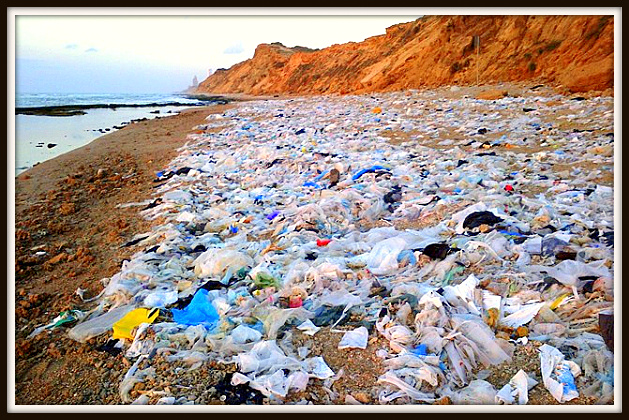
Holy Land Pollution
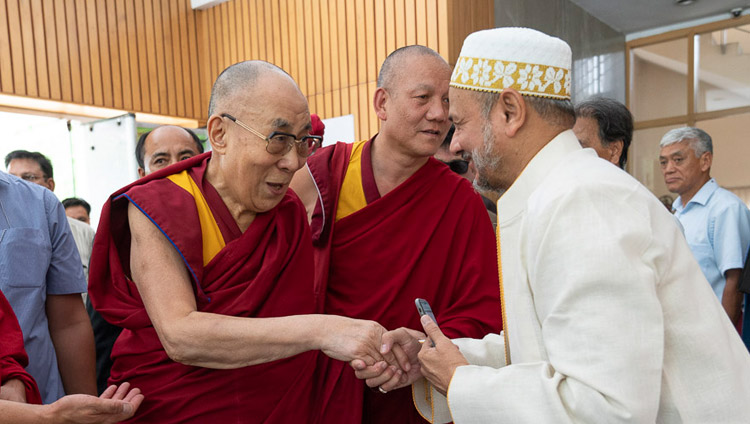
His Holiness the Dalai Lama arriving at the India International Centre to participate in the conference on "Celebrating Diversity in the Muslim World" in New Delhi, India on June 15, 2019. Photo by Tenzin Choejor

His Holiness the Dalai Lama speaking at the conference on "Celebrating Diversity in the Muslim World" at the India International Centre in New Delhi, India on June 15, 2019. Photo by Tenzin Choejor
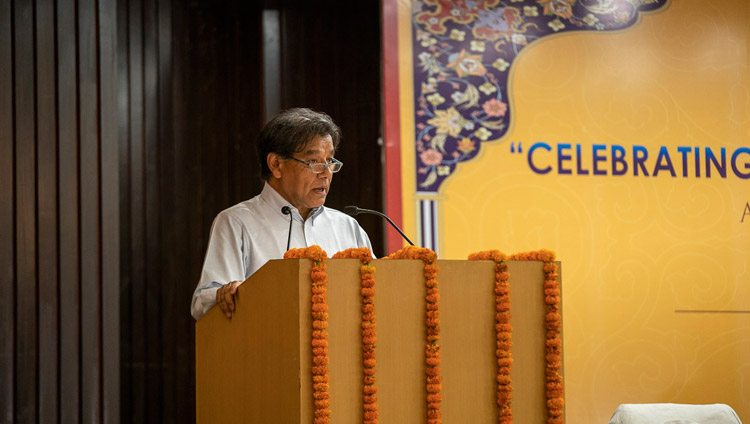
Siddiq Wahid welcoming guests and participants to the conference on "Celebrating Diversity in the Muslim World" at the India International Centre in New Delhi, India on June 15, 2019. Photo by Tenzin Choejor

Ashraf Ali Barcha of the Anjuman Imamia Leh addressing the conference on "Celebrating Diversity in the Muslim World" at the India International Centre in New Delhi, India on June 15, 2019. Photo by Tenzin Choejor

His Holiness the Dalai Lama speaking at the conference on "Celebrating Diversity in the Muslim World" at the India International Centre in New Delhi, India on June 15, 2019. Photo by Tenzin Choejor
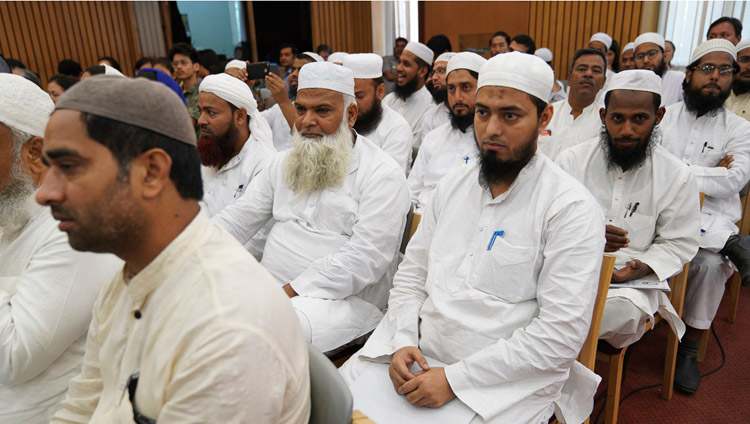
Members of the audience listening to His Holiness the Dalai Lama's address at the conference on "Celebrating Diversity in the Muslim World" at the India International Centre in New Delhi, India on June 15, 2019. Photo by Tenzin Choejor
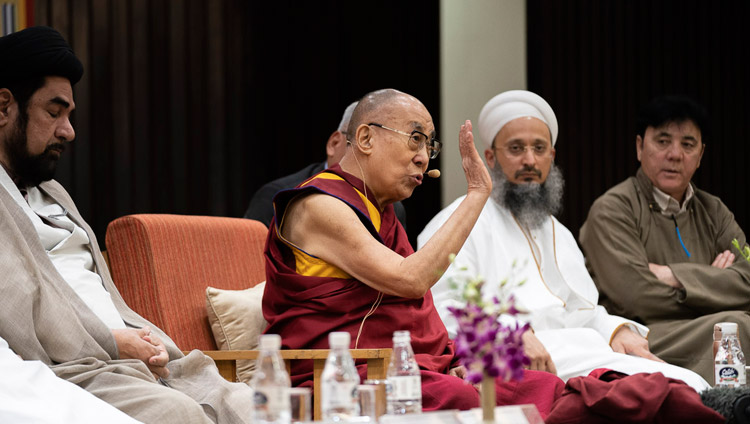
His Holiness the Dalai Lama speaking at the conference on "Celebrating Diversity in the Muslim World" at the India International Centre in New Delhi, India on June 15, 2019. Photo by Tenzin Choejor

A member of the audience listening to His Holiness the Dalai Lama answering his question during the conference on "Celebrating Diversity in the Muslim World" at the India International Centre in New Delhi, India on June 15, 2019. Photo by Tenzin Choejor
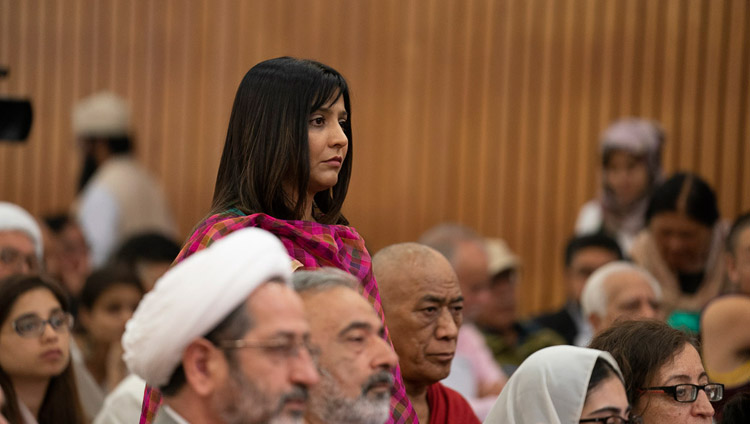
A member of the audience listening to His Holiness the Dalai Lama answering her question during the conference on "Celebrating Diversity in the Muslim World" at the India International Centre in New Delhi, India on June 15, 2019. Photo by Tenzin Choejor

Maulana Syed Kalbi Jawad Naqavi, a Shia teacher from Lucknow, speaking at the conference on "Celebrating Diversity in the Muslim World" at the India International Centre in New Delhi, India on June 15, 2019. Photo by Tenzin Choejor
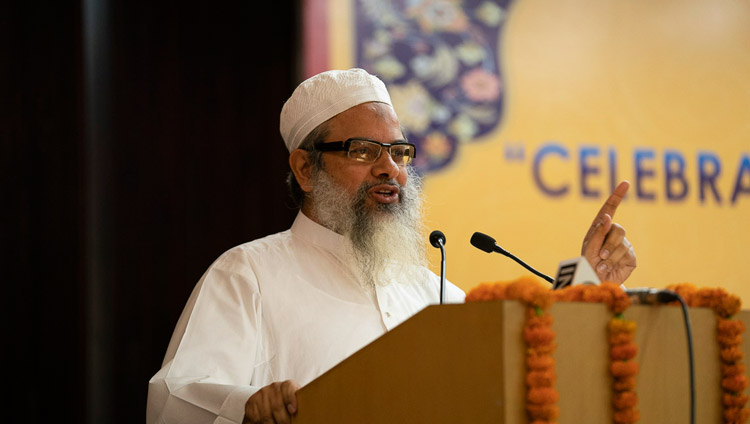
Maulana Mahmud Madani addressing the conference on "Celebrating Diversity in the Muslim World" at the India International Centre in New Delhi, India on June 15, 2019. Photo by Tenzin Choejor

Dr Mohammed Husain Mokhtari, Chancellor of University of Islamic Denomination or Madhaheb University in Tehran, Iran speaking at the conference on "Celebrating Diversity in the Muslim World" at the India International Centre in New Delhi, India on June 15, 2019. Photo by Tenzin Choejor
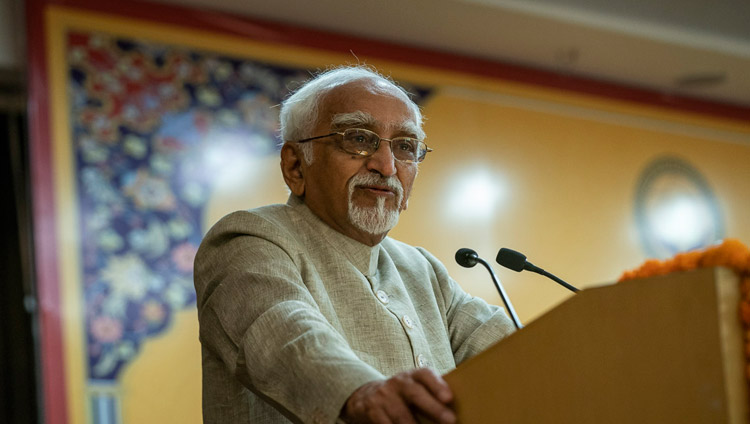
Former Vice President of India, Hamid Ansar speaking on the concept of diversity at the conference on "Celebrating Diversity in the Muslim World" at the India International Centre in New Delhi, India on June 15, 2019. Photo by Tenzin Choejor
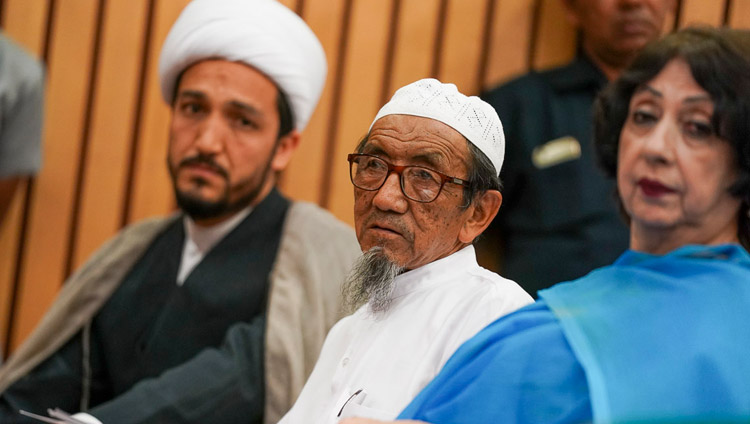
Members of the audience listening to the speakers during the conference on "Celebrating Diversity in the Muslim World" at the India International Centre in New Delhi, India on June 15, 2019. Photo by Tenzin Choejor
Celebrating Diversity in the Muslim World June 15, 2019
June 15, 2019
New Delhi, India - Upwards of 350 people filled the auditorium at the India International Centre today to attend a conference focussed on the theme, ‘Celebrating Diversity in the Muslim World’. Inspired and encouraged by His Holiness the Dalai Lama, the event was organized by the Muslims of Ladakh.
June 15, 2019
New Delhi, India - Upwards of 350 people filled the auditorium at the India International Centre today to attend a conference focussed on the theme, ‘Celebrating Diversity in the Muslim World’. Inspired and encouraged by His Holiness the Dalai Lama, the event was organized by the Muslims of Ladakh.
On arrival, His Holiness was welcomed by Dr Abdul Qayoom of the Anjuman Moin-ul-Islam and Ashraf Ali Barcha of the Anjuman Imamia Leh. In the auditorium he personally greeted the numerous Muslim clerics present, before taking his seat on the stage.
In his preliminary remarks he mentioned that Ladakhi Muslims came to Lhasa during the time of the Fifth Dalai Lama, who gave them a piece of land on which to construct a mosque. Subsequently, representatives of their community we always invited to Tibetan government functions.
Despite having heard no reports of disputes between Shiite and Sunni Muslims in India, elsewhere members of these different denominations are killing each other. His Holiness expressed dismay that this could happen between people of the same faith, who worship the same God, read the same Holy Scripture and follow the same pattern of praying five times a day.
In his preliminary remarks he mentioned that Ladakhi Muslims came to Lhasa during the time of the Fifth Dalai Lama, who gave them a piece of land on which to construct a mosque. Subsequently, representatives of their community we always invited to Tibetan government functions.
Despite having heard no reports of disputes between Shiite and Sunni Muslims in India, elsewhere members of these different denominations are killing each other. His Holiness expressed dismay that this could happen between people of the same faith, who worship the same God, read the same Holy Scripture and follow the same pattern of praying five times a day.
“I felt that Indian Muslims should be more active in promoting religious harmony,” he explained. “I thought that a meeting of Indian Muslims here in Delhi could be helpful and I really appreciate your having arranged it. I’m also happy to know that brothers and sisters from Iran are joining us here. We have to make clear to the eyes of the world how important it is to maintain religious harmony.”
Siddiq Wahid welcomed the guests and participants, explaining that the Guest of Honour, former Vice President Hamid Ansari had been unavoidably delayed, but would come later. He alluded to the longstanding interaction between Muslims and Tibet that dates back to the 8th century. He also noted that the Tibetan language is employed in four SAARC countries—India, Nepal, Pakistan and Bhutan. He requested Hafiz Ghulam Mohammad to recite the Tilawaat e Quran Sharief, the gist of which was to say—”Do not become divided; Allah brings you together; you are brothers.”
Siddiq Wahid welcomed the guests and participants, explaining that the Guest of Honour, former Vice President Hamid Ansari had been unavoidably delayed, but would come later. He alluded to the longstanding interaction between Muslims and Tibet that dates back to the 8th century. He also noted that the Tibetan language is employed in four SAARC countries—India, Nepal, Pakistan and Bhutan. He requested Hafiz Ghulam Mohammad to recite the Tilawaat e Quran Sharief, the gist of which was to say—”Do not become divided; Allah brings you together; you are brothers.”
A. Qayum Giri declared that the intent of the conference was to celebrate diversity in the Muslim world. Although the Muslims of Ladakh are few in number, they were providing this opportunity in anticipation that such meetings will continue and grow in the future. “We want to make the world aware of the harmony we maintain on the ‘roof of the world’ and ask how this can be applied elsewhere in this country and further afield. We intend to learn, to take home what we learn and spread it in the Muslim world.”
Ashraf A. Barcha observed that Ladakh is a remote region and Muslims are in a minority there, but are stable, calm and peaceful. He hoped that speakers would identify steps to avert any future problems that might arise and stimulate constructive dialogue.
Ashraf A. Barcha observed that Ladakh is a remote region and Muslims are in a minority there, but are stable, calm and peaceful. He hoped that speakers would identify steps to avert any future problems that might arise and stimulate constructive dialogue.
In his address His Holiness noted that of seven billion human beings alive today, one billion have no interest in religion, leaving six billion who follow one of several different religious traditions. He noted that the Indian practice for cultivating a calmly abiding mind, shamatha, gave rise to the traditions of non-violence and compassion (ahimsa and karuna). He suggested that, compared to the ancient civilizations of China and Egypt, that of the Indus Valley had resulted in particularly sophisticated philosophical developments.
“Today, everyone wants to live a happy life. No one wants to suffer. Indeed, happiness is part of the basis of our survival. Scientists have concluded that basic human nature is compassionate. This is linked to individuals’ survival being dependent on the rest of the community. Those who grow up in a more compassionate atmosphere tend to be happier and more successful. On the other hand, scientists suggest that living with constant anger or fear undermines our immune system. Interdependence means that all seven billion human beings belong to one human community.
“In today’s world, despite material development, many problems we face are of our own creation. They are provoked by our tendency to see others in terms of ‘us’ and ‘them’. Children don’t make such distinctions. They don’t care what religion, race or nation their playmates belong to so long as they smile and play happily. We need to remember the oneness of humanity, that in being human we are all the same, and I am committed to letting people know this.
“Today, everyone wants to live a happy life. No one wants to suffer. Indeed, happiness is part of the basis of our survival. Scientists have concluded that basic human nature is compassionate. This is linked to individuals’ survival being dependent on the rest of the community. Those who grow up in a more compassionate atmosphere tend to be happier and more successful. On the other hand, scientists suggest that living with constant anger or fear undermines our immune system. Interdependence means that all seven billion human beings belong to one human community.
“In today’s world, despite material development, many problems we face are of our own creation. They are provoked by our tendency to see others in terms of ‘us’ and ‘them’. Children don’t make such distinctions. They don’t care what religion, race or nation their playmates belong to so long as they smile and play happily. We need to remember the oneness of humanity, that in being human we are all the same, and I am committed to letting people know this.
“All our religious traditions convey a message of love. In Buddhist terms we talk about feeling that all sentient beings are as dear to us as our own mother. Muslims in Tibet were very peaceable. In Turtuk, the northernmost village in India, an Imam told me that a Muslim should love every member of Allah’s creation. Elsewhere another elder told me that someone who causes bloodshed is no longer a proper Muslim.
“We are peaceful here and now, but among our neighbours in Afghanistan, Syria and Yemen children are suffering deeply. Why is that? We have to make an effort to create a more peaceful world, by cultivating inner peace within ourselves. Of course, we follow different traditions, we have different philosophical points of view, but the underlying message is one of love.
“Theistic faiths suggest we are all creatures of a merciful God, like children of a single father. We have to think about what unites us rather than what makes us different. All religions have the same potential to create a happy human being; they convey the same message of love. There are wonderful people belonging to all these traditions.
“We are peaceful here and now, but among our neighbours in Afghanistan, Syria and Yemen children are suffering deeply. Why is that? We have to make an effort to create a more peaceful world, by cultivating inner peace within ourselves. Of course, we follow different traditions, we have different philosophical points of view, but the underlying message is one of love.
“Theistic faiths suggest we are all creatures of a merciful God, like children of a single father. We have to think about what unites us rather than what makes us different. All religions have the same potential to create a happy human being; they convey the same message of love. There are wonderful people belonging to all these traditions.
“Meanwhile, killing among Muslims and Buddhists in Bangladesh, Burma or Sri Lanka, among Muslims and Christians in Egypt, in the name of religion is unthinkable. If we have peace of mind within ourselves, peace in the world will come about. But religious harmony is essential. If you ask—”Is religious harmony possible?” the answer is—look at India. Look at the example of Zoroastrians or Parsees who barely number 100,000, but who live among millions of Hindus and Muslims in Mumbai completely without fear.
“It seems to me that Shias and Sunnis are brothers and sisters and yet in our neighbour Pakistan they are killing each other. I feel that Indian Muslims should show the rest of the world, especially people in other Muslim countries, that religious harmony is possible, which something else I’m committed to sharing with others.”
His Holiness explained that as a Tibetan in whom Tibetans inside and outside Tibet place their trust, he has a responsibility to consider their well-being. He is also concerned to protect Tibet’s natural environment, the source of so many of Asia’s great rivers. He warned that there is a real danger of a reduction in the amount of water available due to the climate crisis. He added that he tries to educate people about Tibet’s cultural heritage and the advanced centre of learning at Nalanda from which it is derived. Allied to this is his commitment to trying to revive interest in ancient Indian knowledge of the workings of the mind and emotions.
“It seems to me that Shias and Sunnis are brothers and sisters and yet in our neighbour Pakistan they are killing each other. I feel that Indian Muslims should show the rest of the world, especially people in other Muslim countries, that religious harmony is possible, which something else I’m committed to sharing with others.”
His Holiness explained that as a Tibetan in whom Tibetans inside and outside Tibet place their trust, he has a responsibility to consider their well-being. He is also concerned to protect Tibet’s natural environment, the source of so many of Asia’s great rivers. He warned that there is a real danger of a reduction in the amount of water available due to the climate crisis. He added that he tries to educate people about Tibet’s cultural heritage and the advanced centre of learning at Nalanda from which it is derived. Allied to this is his commitment to trying to revive interest in ancient Indian knowledge of the workings of the mind and emotions.
After a short break for tea, His Holiness answered questions from the audience. He expressed great sympathy for the Rohingya refugees from Burma along with his conviction that the Buddha would have protected such people. He reported that Aung San Suu Kyi had told him that due to military involvement the situation was difficult to deal with.
When asked to explain how to cultivate inner peace, His Holiness suggested that believing in ‘God, the father’ can help. Otherwise, recognising that things do not exist as they appear, and cultivating altruism, can counter the destructive emotions that disturb us. He added that both ‘ahimsa’ and ‘karuna’ involved training the mind.
His Holiness told a questioner who wanted to know about nirvana that it was complicated. Nirvana, he said, is a state of mind purified through a deep understanding of reality. He clarified that since ignorance is not part of the nature of the mind it can be dispelled from it. However, to achieve that requires study, reflection and meditation.
When asked to explain how to cultivate inner peace, His Holiness suggested that believing in ‘God, the father’ can help. Otherwise, recognising that things do not exist as they appear, and cultivating altruism, can counter the destructive emotions that disturb us. He added that both ‘ahimsa’ and ‘karuna’ involved training the mind.
His Holiness told a questioner who wanted to know about nirvana that it was complicated. Nirvana, he said, is a state of mind purified through a deep understanding of reality. He clarified that since ignorance is not part of the nature of the mind it can be dispelled from it. However, to achieve that requires study, reflection and meditation.
A teacher wanted to know how teach schoolchildren about love and compassion. His Holiness suggested pointing out that genuine friendship is not based on money and power, but on trust, which in turn develops as a result of showing concern for other people’s well-being. In other words, explain to schoolchildren that friendship is founded on warm-heartedness. His Holiness acknowledged that we have a natural sense of self-interest, but made clear that there is a difference between pursuing it wisely and foolishly.
Invited to suggest how to reconcile differences between Shias and Sunnis, or between Iran and Saudi Arabia, His Holiness pointed out that politicians make assertions in the name of religion which tend to provoke an emotional response. He remarked that some people view Iran with suspicion, which he doesn’t, describing it as a democratic country that follows a Shia tradition. On the other hand, he remarked, Bin Laden came from the Sunni side. He declared that we can’t generalize about Shias as a whole, nor about Sunnis as a whole. It’s not possible to generalize about a whole community on the basis of the misbehaviour of a few individuals.
Invited to suggest how to reconcile differences between Shias and Sunnis, or between Iran and Saudi Arabia, His Holiness pointed out that politicians make assertions in the name of religion which tend to provoke an emotional response. He remarked that some people view Iran with suspicion, which he doesn’t, describing it as a democratic country that follows a Shia tradition. On the other hand, he remarked, Bin Laden came from the Sunni side. He declared that we can’t generalize about Shias as a whole, nor about Sunnis as a whole. It’s not possible to generalize about a whole community on the basis of the misbehaviour of a few individuals.
Finally, His Holiness answered an enquiry about meditation by making clear that there is a difference between mental consciousness and sensory awareness. He pointed out that we have clearer access to mental consciousness when we dream because at that time our sensory consciousnesses are dormant. Training the mind, cultivating compassion and an understanding of reality, all involve mental consciousness. Success in developing a calmly abiding mind and analysis depend on how much effort you exert and how well you understand the workings of the mind and emotions.
There followed contributions from representative Muslim clerics. Maulana Abdul Qadir Noorudin from the Bohra tradition in Mumbai spoke of the diversity that is India, but also of the harmony that prevails here. He mentioned that the Holy Quran encourages the finding of shared values with others, which serve as confidence building measures. The people of India, he suggested, are bound by a shared life-style. Nevertheless, people of ill-intent try to promote division, whereas those of good heart foster friendship. He concluded that all human beings need tolerance and forgiveness.
There followed contributions from representative Muslim clerics. Maulana Abdul Qadir Noorudin from the Bohra tradition in Mumbai spoke of the diversity that is India, but also of the harmony that prevails here. He mentioned that the Holy Quran encourages the finding of shared values with others, which serve as confidence building measures. The people of India, he suggested, are bound by a shared life-style. Nevertheless, people of ill-intent try to promote division, whereas those of good heart foster friendship. He concluded that all human beings need tolerance and forgiveness.
Maulana Syed Kalbi Jawad Naqavi, a Shia teacher from Lucknow, confessed that using English he learned 40 years ago left him short of words. Of the three points he made, the first was that most of us are not real Muslims; we are not actual but artificial Muslims, because real Muslims are expected to help others, to work to serve all human beings. A Muslim is one who helps other human beings, whatever faith they follow.
His second point was to ask the meaning of victory in Islam. We tend to think that victory involves conquering or overcoming others, but victory is to establish peace among human beings. Thirdly, the Maulana asked, what is ‘jihad’? He explained that when darkness is dispelled by lighting a candle—that is ‘jihad’. When you work to eliminate illiteracy—that is ‘jihad’. When a mother feeds her child to allay its hunger—that is ‘jihad’. Shedding blood is not ‘jihad’.
He ended by remarking that it is a sorry state of affairs when it takes a non-Muslim like His Holiness to remind Muslims about the value of non-violence and reconciliation.
Maulana Mahmud Madani, from Deoband, spoke of visiting Ladakh and Turtuk. There he met Shias and Sunnis and came across some who prayed together. He noted that communal harmony exists when Muslims work not only for Muslims but for everyone. He agreed with His Holiness’s observation that very often it is not religious issues that underlie conflict but political considerations. Too often religion is used as a weapon for short term political gain. He recalled that it was ‘fakirs’ who captured the hearts and minds of people and who could be called their rulers more than kings or emperors.
Dr Mohammed Husain Mokhtari (Chancellor of University of Islamic Denomination or Madhaheb University, Tehran, Iran) told the audience that it is a religious duty to respect each other. He commended accepting diversity among followers of religions, but also that in following religion they are united. He said we have to recognise diversity as a fact and that to do so is beneficial for everyone.
Dr Mohammed Husain Mokhtari (Chancellor of University of Islamic Denomination or Madhaheb University, Tehran, Iran) told the audience that it is a religious duty to respect each other. He commended accepting diversity among followers of religions, but also that in following religion they are united. He said we have to recognise diversity as a fact and that to do so is beneficial for everyone.
Mutual respect is important. Acceptance and recognition of each other is the preliminary to dialogue and if the goal is unity, there has to be dialogue. He encouraged the recognition of similarities as well as the acceptance of differences. Ignorance and negligence are significant obstacles to the spirit of diversity. We cannot achieve unity if we view some groups of people with fear. Nor is it helpful to criticize others as non-believers.
Former Vice President of India, Hamid Ansari spoke of diversity as such a desirable and simple concept. He asked what we find in nature—no flowers, trees or human beings are exactly the same; there is diversity. He commended the efforts made to convene this conference, but wondered if it would have been necessary if we properly understood diversity.
Muslims are a global community, Mr. Ansari said. They number 1.6 billion. Of those, 66% live in Asia; 15% live in West Asia or the Middle East; 20% live in Africa. India, with 190 million Muslims, has the second largest Muslim population after Indonesia. Muslims, he suggested are united in their belief and religious language, but diverse in their manners and customs. The unity of their faith is demonstrated during the annual pilgrimage of the Haj. Wherever they’re from the ritual is the same. There is unity in diversity and diversity in unity.
“Islam has been present in India for a long time and has shown not only diversity but also adaptability. It can be a model for others around the world to emulate. Living together in diversity as we see in India is as unique as it is rare; let’s take it further.”
In bringing the morning session to a close, Siddiq Wahid recalled something he learned from His Holiness long ago when he was about 13 years old—to practise one religion explicitly is practise them all implicitly. He thanked His Holiness for coming and expressed the hope that what was learned today may be impressed on Ladakh, J&K, India and South Asia. He went on to thank everyone who had contributed to making the conference a success.
The delegation from Iran presented gifts to His Holiness and to Mr Ansari. His Holiness ate lunch with the Muslim clerics, while the public ate on the patio.
In the afternoon, the conference was to hear from other members of the Iranian delegation, as well as from Prof Ali Khan speaking about Dialogue within the Muslim World; from Ms Farah Naqvi about Gender in the Muslim World and from Ms Seems Mustafa about Muslims and the Media.
His Holiness returned to his hotel and will return to Dharamsala tomorrow.
https://www.dalailama.com/news/2019/celebrating-diversity-in-the-muslim-world
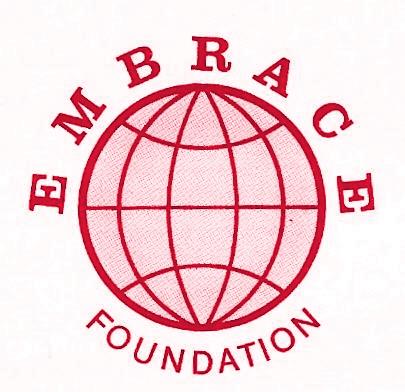
Embrace Foundation Retreat Center
Embrace.Foundation (skype messaging) - 011+1+212.675.4500 (New York)
Click to Email Us

